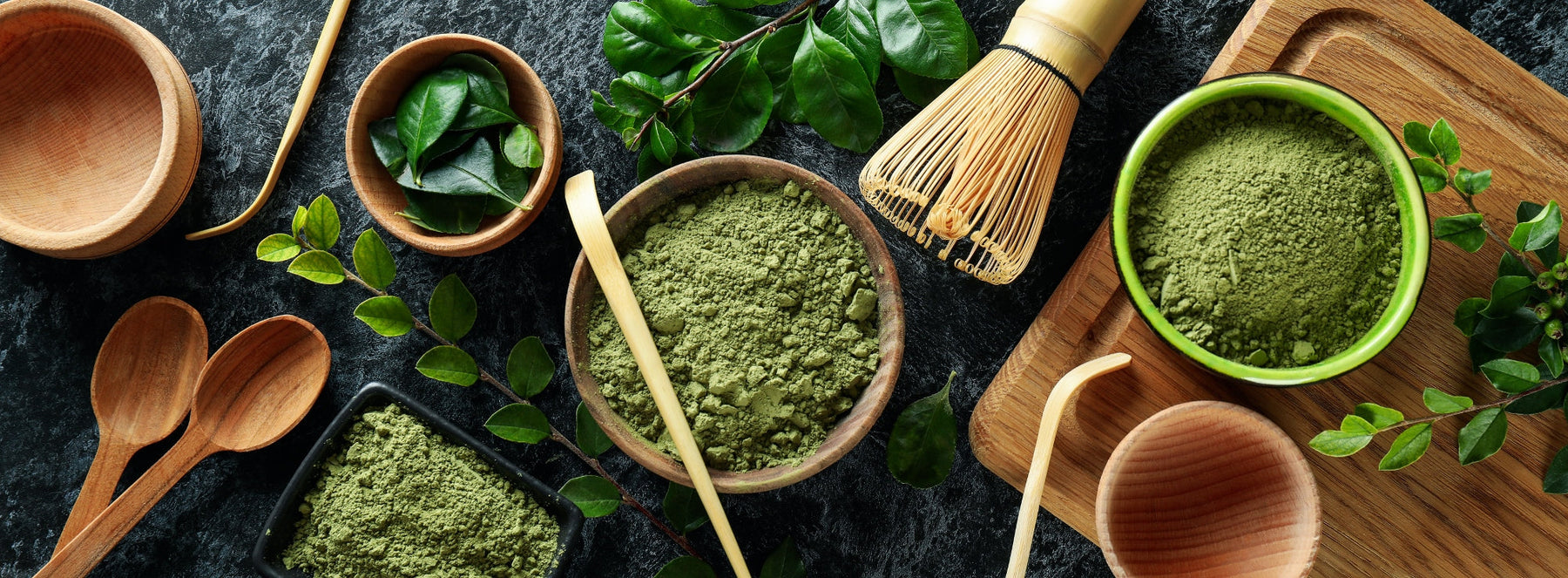
Matcha Madness is Sweeping the Globe
The popularity of matcha has now soared to a level that is challenging supplies and driving up prices.
Cafés and coffee shops across the world are offering the Japanese green tea and are competing for the stock they need to keep up with the increasing demand.
Why all the fuss and what kick-started the craze?
What is matcha?
Matcha is a type of finely ground green tea made from specially grown and processed tea leaves. It’s traditionally used in Japanese tea ceremonies. Unlike regular green tea, where you steep the leaves and discard them, matcha involves consuming the whole leaf in powdered form—making it more concentrated in flavour, nutrients, and caffeine.
Originating in Japan but now cultivated in other countries, Matcha tea plants are shade-grown for about 3–4 weeks before harvest. This practice boosts chlorophyll levels, giving matcha its vibrant green colour and high L-theanine content. L-theanine is an amino acid that promotes calm alertness.
Matcha boasts a grassy and slightly sweet taste with pleasant bitterness. Ceremonial grade matcha is smooth and bright. It is used in traditional tea ceremonies. Culinary grade matcha is more bitter and is generally used in lattes, smoothies, baking, and desserts.
What are the benefits of matcha?
Matcha may have many health benefits. As matcha is rich in antioxidants, especially catechins (like EGCG), it can support the metabolism and heart health. It also contains caffeine and L-theanine which sustain energy and mental clarity. Matcha may aid focus, mood regulation, and immune support, though more research is needed.
What sparked the craze?
As with most things these days, the thirst for matcha has largely inspired by social media and by TikTok in particular. The "Matcha Tok" hashtag has amassed tens of millions of views thus far. Matcha’s popularity has also been driven by Japan’s recent boom in tourism.
How is matcha prepared?
Traditional matcha is whisked with hot water using a bamboo whisk (chasen). This process creates a frothy drink. Matcha can also be blended into milk (for matcha lattes), or added to smoothies and foods.
Is demand outstripping supply?
Matcha supplies are certainly challenged right now. Soaring demand is causing shortages, and the situation hasn’t been helped by the recent record-breaking heatwave in Japan that has impacted crops.
In addition, Japan’s agricultural industry is suffering from a lack of farmers as the population of the country is aging, and fewer young people are interested in farming careers.
The traditional process for producing matcha isn’t helping. The leaves are ground into powder using stone mills which can deliver as little as 40g an hour.
Shops in Kyoto, Japan, a region known for its matcha, are selling out shortly after they open each day, and it is tourists that are buying the matcha. Many retailers are now limiting how much their customers can buy each time they visit.

Advocates of matcha are urging matcha enthusiasts to limit their consumption by savouring the tea in its purest form rather than using it as additive for various foods and drinks. Indeed, the Global Japanese Tea Association is asking people to use lower grade matcha for cooking.
What’s next for matcha?
The global demand for matcha is unlikely to diminish any time soon and could continue to increase, causing further shortages and higher prices. Trump’s tariffs will also impact prices. A 15% import tax on Japanese products entering the US had been agreed.
Matcha is experiencing a boom. Things will probably settle down eventually, but you never know when and to what extent. In the meantime, matcha is hot property and increasingly hard to get.



Leave a comment